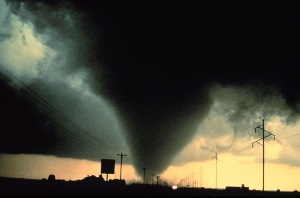Recent events have shown that if your company is to survive a disaster, you must develop a plan for business recovery. Many businesses have contingency plans in place to help them recover from natural events like floods and hurricanes, but who actually plans for computer viruses, fires or worse? 
The key is to have a disaster recovery plan, and we’ll look at why you need a plan, how to get started, what to consider, and where to find help.
The overall goal is to return your business to normal operations as quickly as possible and, perhaps more importantly, before your competitor is back in business. Many businesses fail each year after suffering damage from serious fires, floods or other natural disasters because they were unprepared for the disaster.
Property insurance will pay to repair or replace buildings and content, and business interruption coverage can provide funds for loss of income, but they can’t replace lost customers, employees or vendors.
Now is the best time to review your insurance policies and ensure you have all the proper coverage in place. Developing a comprehensive plan may ensure that your business and employees’ livelihoods survive.
There are many reasons for developing a disaster recovery plan, the most important being:
• Maintain cash flow
• Protect employees
• Moral and legal obligations
• Defend legal action from shareholders
• Maintain customer relations and client base
Don’t Wait
If you do not currently have a disaster recovery plan, begin working on it immediately. First, develop a process outline. The “process” should consist of the following:
• Involve owners and top management in the planning process, they should support the overall plan.
• Establish a planning committee – it can be as small as two or three individuals.
• Review your current insurance program with your account executive to ensure
adequate coverage for potential disasters.
• Identify disaster exposures – what natural, man-made, or political disasters is your business susceptible to? Consider this partial list:
• Fire, Flood, Freezing
• Tornadoes, Hurricanes, Hailstorms, Storm Surge, Landslides, Windstorms, Earthquakes
• Computer Virus, Mail Interruption, Data Loss
• Civil Disturbances
• Loss of an Important Vendor or Supplier
Some of these disasters are not insurable or would not be covered by insurance. Still, to be fully effective a disaster recovery plan needs to take all of these – and others – into consideration.
Loss Prevention
• Identify critical personnel, equipment, and data. “Critical” refers to their relative importance to your business. What must you have to return your business to normalcy?
• Collect information – you will need a list of every important piece of information needed in the event of a disaster including inventories, telephone numbers, equipment listings, vendor lists, software inventory, etc.
• Develop a formal, written disaster recovery plan – incorporate all of the above information into a plan that identifies specific disaster scenarios, steps that will protect your business prior to the disaster, and most importantly, instructions for getting your operation back to normal as quickly and efficiently as possible.
• Test the plan – both initially and annually thereafter. It is important to review and update the plan periodically as your exposures to loss change.
Online Resources
• The Institute for Business & Home Safety (IBSH) has developed two guides to assist small business owners with disaster planning. These publications are available on the IBSH website at no cost or ordered from the IBSH by calling
866-657-4247.
• Getting Back to Business – A Guide for the Small Business Owner Following Disaster – www.disastersafety.org/resource/resmgr/pdfs/gb2b10.pdf
• Open For Business – A Disaster Planning Toolkit For The Small Business Owner – www.disastersafety.org/resource/resmgr/pdfs/OpenForBusiness_new.pdf
The IBHS also recommends the following resources:
• American Red Cross – www.redcross.org
• Association of Contingency Planners – www.acp-international.com
• Federal Emergency Management Agency – www.fema.gov
• Insurance Information Institute – www.iii.org
• National Emergency Management Association – www.nemaweb.org
• U.S. Small Business Administration – www.sba.gov
• Disaster Recovery Journal – www.drj.com
For more information about this topic, contact the Zurich Risk
Engineering Department at 800-821-7803. For more information on any of
Zurich’s products or services, visit zurichna.com/zdu. Copyright 2011
Zurich American Insurance Co.













